For China Manufacturing 2025 and the development direction of the automotive industry, new energy and intelligence have been the two themes discussed. In the process of intelligent car, the CAN FD protocol has received extensive attention due to its superior performance. This article will discuss the CAN FD protocol with everyone.
This article refers to the address: http://
In today's society, cars have become an indispensable part of our lives. People hope that cars are not only a means of transportation, but also an extension of the scope of life and work. In the car, just like staying in your own office and home, you can call, surf, entertain, and work.
Therefore, in order to improve the competitiveness of products, auto manufacturers will integrate more and more functions into automobiles. The ECU (Electronic Control Unit) has increased in a large amount to increase the bus load rate sharply, and the conventional CAN bus has become increasingly incapable. Therefore, the CAN FD (CAN with Flexible Data-Rate) protocol was born.
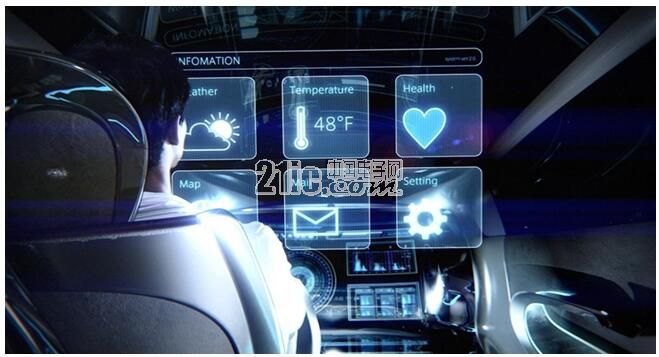
It inherits the main features of the CAN bus, improves the network communication bandwidth of the CAN bus, improves the false frame miss detection rate, and maintains most of the hardware and software of the network system, especially the physical layer. This similarity allows ECU suppliers to upgrade their car communication networks without major modifications to the software portion of the ECU.
First, the improvement made by CAN FD
CAN FD uses two methods to improve the efficiency of communication: one way is to shorten the bit time and increase the bit rate; the other way is to lengthen the data field length and reduce the number of messages to reduce the bus load rate. Three polynomials are used in the CRC check segment to ensure data reliability under high speed communication.
(1) CAN with Flexible Data-Rate
From the BRS bit in the control field to the ACK field (including the CRC delimiter) is the variable rate, and the rest is the rate used by the original CAN bus. Each of the two rates has a set of bit time definition registers. In addition to using different bit time units TQ, the allocation ratios of the bit time segments can also be different.
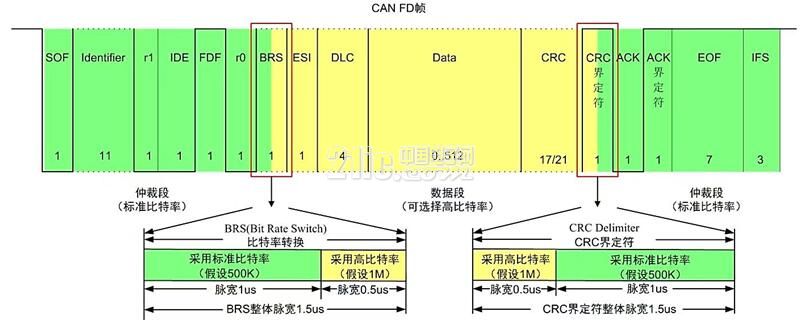
(2) New data field length
CAN FD greatly expands the length of the data field. The DLC supports a maximum of 64 bytes. When the DLC is less than or equal to 8, it is the same as the original CAN bus. When it is greater than 8, there is a nonlinear growth, the largest data. The field length can be up to 64 bytes. The nonlinear relationship between the DLC value and the number of bytes is shown below.

(3) CRC check field
In the process of standardizing the CANFD protocol, the reliability of communication has also been improved. Due to the different lengths of DLCs, CAN FD has selected two new BCH-type CRC polynomials when the DLC is greater than 8 bytes.

Second, CAN FD frame structure analysis

(1) CAN FD data frame at frame start (SOF) and arbitration segment (Arbitration Field)
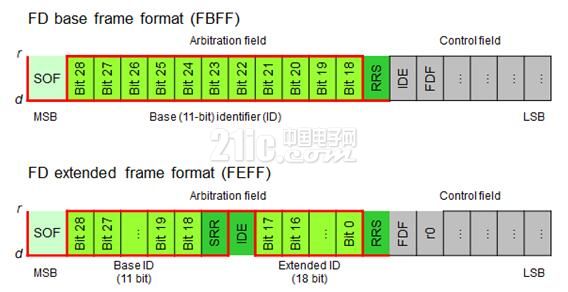
Compared with the traditional CAN, the CAN FD cancels the support of the remote frame, and replaces the RTR bit with the RRS bit, which is often dominant. The IDE bit is still the standard frame and extended frame flag. If the standard frame and the extended frame have the same first 11-bit ID, the standard frame will have the priority of the bus because the IDE bit is 0.
RRS (remote request substitution) remote request replacement bit: the RTR bit in the traditional CAN;
SRR (substitute remote request) instead of remote frame request bit: SRR bit is reserved, no effect;
IDE (Identifier Extension) Extended frame flag: dominant (0) = 11-bit ID, recessive (1) = 29-bit ID.
(2) CAN FD newly added three bit FDF bit, BRS bit, ESI bit in the control segment
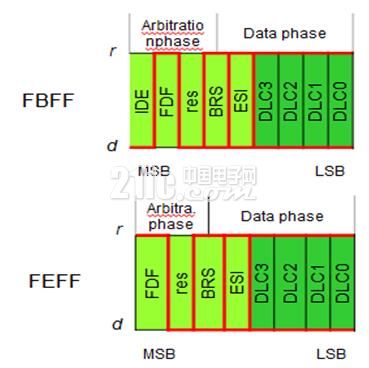
Flexible Data Rate Format: Reserved bit r in the original CAN data frame. The FDF bit is often recessive (1), indicating a CAN FD message;
Bit rate switch: Bit rate switch. When the BRS is dominant (0), the bit rate of the data segment is consistent with the bit rate of the arbitration segment. When the BRS is the recessive bit (1), the bit of the data segment. The rate is higher than the bit rate of the arbitration segment;
ESI bit (Error State Indicator): The error status indicates that the dominant bit (0) is sent when the active error is transmitted, and the recessive bit (1) is sent when the passive error occurs.
(3) The values ​​of the DLCs are related to the data field and the CRC check field, as explained above.
(4) The confirmation field of CAN FD, the end of frame and the intermittent field are the same as the traditional CAN, and will not be described again.
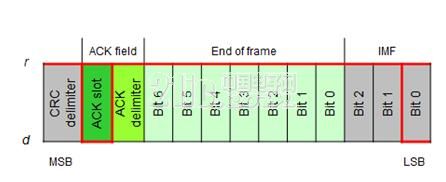
How to upgrade from traditional CAN to CAN FD
Although CANFD inherits most of the characteristics of traditional CAN, we still need to do a lot of work from the traditional CAN to CANFD upgrade.
(1) In terms of hardware and tools, to use CANFD, first select CAN controller and transceiver supporting CANFD, and select new network debugging and monitoring tools.
(2) In terms of network compatibility, special attention should be paid to the case where some nodes of the traditional CAN network segment need to be upgraded to CANFD. Due to the inconsistent frame format, the CANFD node can normally send and receive traditional CAN node messages, but the traditional CAN node cannot. Normally send and receive packets from CANFD nodes.
The CAN FD protocol is the latest upgrade of the CAN-BUS protocol. It increases the 8-byte data per frame of CAN to 64 bytes, and the baud rate is increased from the highest 1Mbps to 8-15Mbps, which improves the communication efficiency by more than 8 times. The communication efficiency of the vehicle. This technology has been monopolized by European and American companies. Until 2016, China's CAN-BUS leader, Guangzhou Zhiyuan Electronics Co., Ltd., developed the first CAN FD interface card in China based on the CAN FD IP core code with full intellectual property rights. Synchronize China's bus technology level with the highest level in the world.
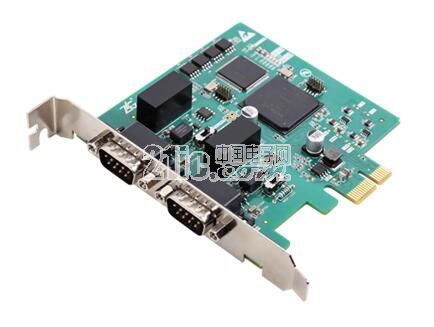
1. Why fiberglass antenna is not suitable for indoor use? A: Many people may have noticed that international brands such as Linksys or DLink typically use only 7dB, 5dB and 2dB antennas, while 9dB or higher gain indoor omnidirectional antennas are rarely seen in the market. As far as we know, the 7dB antenna has fully met the requirements of indoor use. The antenna above 7dB has been used. Due to the small Angle, it cannot give full play to its advantages. Therefore, we recommend using an omnidirectional antenna above 9dB for outdoor use. As for someone, it is good to say indoor wall effect, this statement is unable to prove, also need not believe too much. 2. Why are omnidirectional antennas and perpendicular angles called? A: Generally speaking, an omnidirectional antenna is an antenna with a horizontal radiation Angle of 360 degrees and a vertical sector. The Angle is usually around 6 ~ 15 degrees. The higher the gain, the smaller the vertical Angle. For example, the radiation Angle of the 9dB antenna can be about 14 degrees, while the radiation Angle of the FRP antenna can be about 8 degrees as the limit
868MHZ Fiber Glass Antenna ,915MHZ Fiber Glass Antenna ,LoRa Gateway Antenna ,Wifi Antenna ,Fiber Glass Antenna
Yetnorson Antenna Co., Ltd. , https://www.yetnorson.com